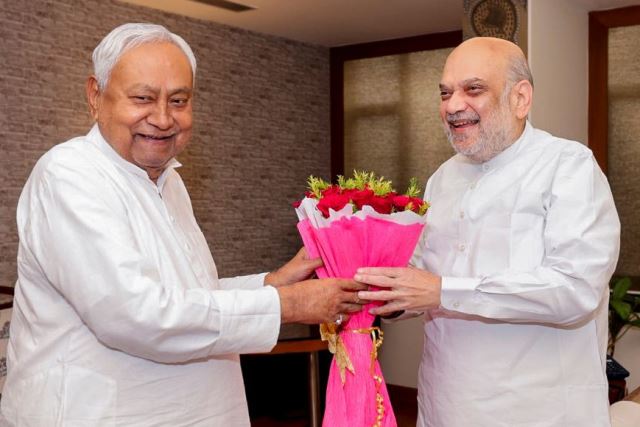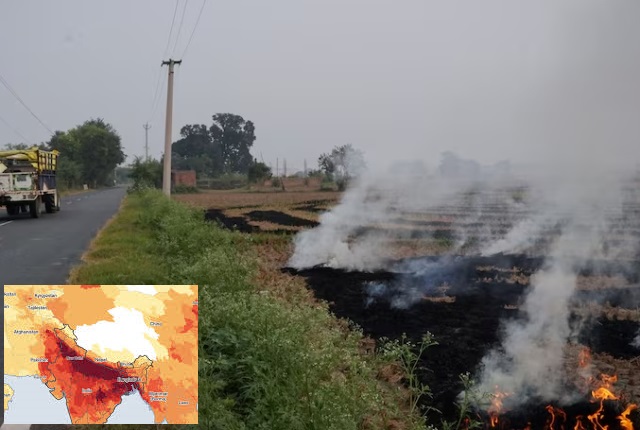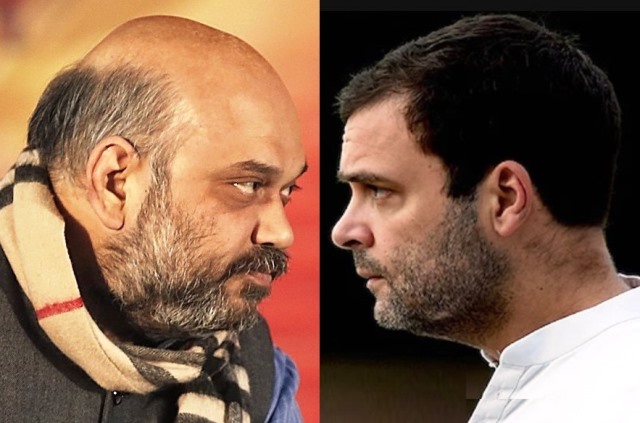
Hesitation in Declaring Nitish as CM Face Part of NDA Tactics
In Bihar’s political theatre, there are few constants, and Nitish Kumar has long been one of them. For two decades, he has presided over the state’s politics with an agility that allowed him to move between alliances, reinvent his image, and reassert his indispensability. But as Bihar approaches another crucial election, that certainty seems to be fading. The National Democratic Alliance (NDA), of which Nitish is a senior constituent, appears hesitant to project him as its chief ministerial candidate. This reluctance is not merely tactical; it reflects deeper shifts in Bihar’s political landscape, the internal dynamics of the NDA, and the changing aspirations of its electorate.
Over the past 20 years, Nitish has led the Janata Dal (United) through four Lok Sabha and as many assembly elections. Regardless of the outcome, he has remained at the helm — an achievement that speaks both of his political skill and his adaptability. Yet, the ground beneath him has been shifting. The JD(U)’s legislative strength has steadily declined from 115 seats in 2010 to just 43 in 2020, even as the Bharatiya Janata Party (BJP), his long-time ally and occasional rival, has grown stronger. The balance of power within the NDA has thus altered significantly, and with it, Nitish’s bargaining position.
For the BJP, which now commands the larger share of NDA’s voter base in Bihar, declaring Nitish as the coalition’s CM face would mean conceding political primacy to a weakened partner. By refraining from naming him, the party retains flexibility, a freedom to decide the leadership question after the results, depending on the seat tally. Amit Shah’s repeated assertion that “the newly elected legislators will choose the chief minister” is not an offhand remark; it is a carefully calibrated signal that the BJP wishes to keep its options open.
There is also the question of trust. Nitish Kumar’s political journey has been marked by ideological fluidity, an ability, or critics would say a willingness, to switch sides in pursuit of power. From the NDA to the Mahagathbandhan and back again, he has shown that in Bihar’s politics, permanence lies only in pragmatism. This history has created a layer of suspicion within both camps. The BJP leadership, mindful of his past realignments, would prefer to avoid making itself hostage to a leader whose allegiance has never been absolute. Keeping the CM question open acts as a safeguard against another political volte-face.
Beyond party arithmetic, there is the generational question. A large section of Bihar’s electorate today comprises young voters who have no memory of the Lalu-Rabri years, the period of lawlessness and decay against which Nitish had once built his reputation as a reformer. For these voters, Nitish represents continuity rather than change. His early achievements, the focus on roads, electricity, girls’ education, and women’s empowerment are now taken for granted.
Tejashwi Yadav, with his promises of ten lakh jobs and a rhetoric centered on opportunity, appeals directly to this demographic. For the BJP, aligning too closely with Nitish risks being seen as defending the status quo, when the mood in parts of Bihar seems to demand renewal.
Within the NDA, the reluctance also mirrors the BJP’s internal strategy of leadership transition. The party has begun grooming a new generation of leaders in the state, Deputy Chief Minister Samrat Chaudhary, former Speaker Vijay Kumar Sinha, and others, each representing a specific social bloc. Publicly projecting Nitish as chief minister would stifle this second line of leadership. Ambiguity, therefore, serves a dual purpose of keeping Nitish in play as a stabilising figure, while leaving room for a possible post-election reconfiguration where the BJP might finally stake claim to the top post in Patna.
Caste equations further complicate the picture. The NDA is an alliance of diverse social bases as upper castes rally largely behind the BJP; the Kurmis and Koeris remain JD(U)’s backbone; Dalits and Mahadalits are courted by the Lok Janshakti Party (Ram Vilas) and Hindustani Awam Morcha. Declaring Nitish too early could alienate smaller allies like LJP(R) and HAM, both of whom nurture their own chief ministerial ambitions. The NDA’s leadership, aware of this delicate balance, finds it safer to defer the decision until the numbers are known.
At another level, this calculated hesitation is itself a campaign tactic. The BJP and its allies can simultaneously leverage Nitish’s administrative record, the roads, the improved law and order, the governance model that once earned Bihar a reputation for turnaround while also distancing themselves from anti-incumbency. By neither rejecting nor fully endorsing him, they can appeal to both Nitish loyalists and voters looking for change. It is a balancing act, and one that perhaps only Bihar’s politics, with its intricate caste arithmetic and perpetual churn, could sustain. For Nitish Kumar, however, the uncertainty must feel unfamiliar. He has built a career on being indispensable; now, for the first time, his indispensability is being questioned. His challenge in this election is twofold of persuading a generation that never saw the darkness from which he claims to have rescued Bihar, and to convince an ally that seems increasingly eager to move beyond him. Whether the BJP’s reluctance is tactical ambiguity or a sign of transition will be known only after the votes are counted. But one thing is certain that this election marks the beginning of a new political reckoning in Bihar, one where the NDA’s old centre of gravity may finally begin to shift.
(The writer is an established Author, Academic and President of the Centre for Reforms, Development & Justice)
The hesitancy on the part of the NDA to announce the incumbent CM, Nitish Kumar, as their CM candidate itself shows the diminished clout of the Nitish led JD(U) vis-a-vis the BJP. The BJP has outgrown the Nitish kumar-led JD(U) in one one India’s longest political alliances and this election has clearly established it as a senior partner which is calling the shots..The above article is an apt analysis of the the contemporary political dynamics of Bihar.



